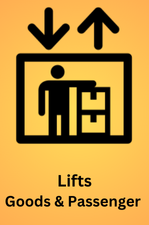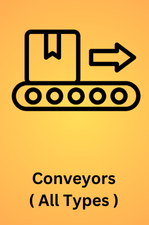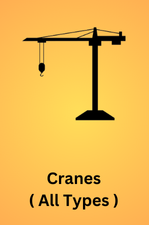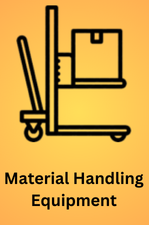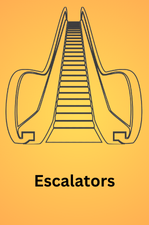Exploring the Usability Features of the Golden Crown Website for Seamless User Experience
To enhance your experience on this dazzling site, start with the intuitive layout. As you enter, the bold visuals capture attention immediately. The harmonious blend of colours invites users into a world where functionality meets flair.
Focus on the navigation bar; it stands as a beacon of simplicity. Clearly labelled sections guide users seamlessly through offerings, whether searching for products or diving into rich content. This design prioritises ease, ensuring that even the most novice surfer finds their way effortlessly.
Don’t overlook the search tool; it’s a powerhouse for direct access. Type in what you seek, and watch the results unfold swiftly. Combine this with responsive elements, and you’ve got a site that adapts to the user’s desires. Each click feels deliberate, a testament to thoughtful engineering.
Ultimately, evaluation of this online gem reveals a commitment to user satisfaction. With striking design and smooth navigation, time spent exploring becomes a pleasure rather than a chore. This is where functional elegance reigns supreme, making each user experience memorable.
Assessing the Homepage Layout for Easy Navigation
The homepage should feature a clear and intuitive interface, allowing users to seamlessly interact with content. Ensure the primary navigation bar is prominently positioned at the top, featuring concise categories that reflect the vast offerings available. Utilizing drop-down menus can save space and enhance accessibility, keeping the design uncluttered.
Consider employing a grid layout that allows for a balanced distribution of visual elements. Aesthetically pleasing images paired with engaging text can draw attention without overwhelming the user. Keep calls to action above the fold for immediate visibility. Simple buttons with descriptive labels guide the user effectively.
Highlighting promotions or important updates at the forefront is wise. A distinctive banner or section can help direct attention without detracting from overall usability. Avoid excessive scrolling by ensuring that vital information is readily available and not buried deep within the page.
Utilize clear typography with a legible font size. Contrast between background and text enhances readability, making it easier for users to absorb information. Testing various font styles can help determine what resonates most with the audience.
Incorporating a search function boosts the browsing experience. Users appreciate the ability to quickly find specific content. Placing the search bar in an easily accessible position supports swift navigation.
Lastly, responsiveness is key. The design must adapt to various devices and screen sizes, maintaining usability on smartphones, tablets, and desktops. Regular testing will help identify any navigation issues across platforms, ensuring a consistent user experience.
Evaluating the Search Function for Quick Access to Information
The search feature on the platform offers a valuable opportunity for swift navigation. However, a few tweaks could enhance the user interface and overall experience significantly. First, ensure that the search bar is prominently placed. Visibility is key. Users should not have to hunt for it.
Search Suggestions and Autofill
Implementing an autofill option can drastically improve search efficiency. As words are typed, suggestions should appear, helping users quickly find what they are looking for. Think about integrating synonyms or related concepts. This can capture various user intents and broaden usability.
Relevance of Results
Results should be sorted by relevance and recency. If a user searches for “design,” the highest-ranking items ought to be the most pertinent. Ensure that filters are available, allowing users to refine searches by categories or tags. A well-organised set of results promotes a seamless experience.
| Search Bar Visibility | Ensure it’s easy to find and use. |
| Autofill Suggestions | Implement suggestions to guide users. |
| Sort Options | Utilize filters for a more tailored experience. |
| Result Relevance | Rank by relevance and update frequency. |
Incorporating these elements can transform how users interact with search functionality. A well-designed search interface not only enhances navigation but also enriches the overall journey. Focus on clarity and accessibility; it pays off in user satisfaction.
Investigating the Mobile Responsiveness of the Golden Crown Site
Test your experience on this site by accessing it via your smartphone. The interface adapts impressively, maintaining sharp graphics and seamless navigation. Buttons are optimally sized for touch, avoiding those frustrating misclicks. A well-structured layout prevents content from feeling cramped, presenting each feature clearly and allowing users to find what they need quickly.
The design’s fluidity shines as you switch between portrait and landscape modes. Elements resize without distortion, keeping everything easily accessible. Ensure that your screen size doesn’t hinder gameplay or browsing. Intuitive gestures enhance interactivity. Swipe, scroll, and tap, everything flows smoothly.
If you’re looking at specific features, such as promotions or account management, they remain just a click away. No unnecessary scrolling or zooming needed. Readability is key; text is legible without squinting. A user-friendly experience here truly reflects the care that went into crafting the site.
However, always check for updates; occasionally, hidden bugs pop up, impacting performance. Test loading times to prevent delays. Fast access is golden in this scenario. Visit https://goldencrown-casino1.com/ to see for yourself and explore every crown jewel this platform offers!
Reviewing the Clarity of Product Descriptions and Visuals
For optimal user engagement, product descriptions must be clear and appealing. Each item should have well-structured, concise text that highlights features and benefits. Consider using bullet points. This breaks down information, making it digestible. Avoid jargon. Keep the language simple; users appreciate clarity over complexity.
Visual Presentation: A Key Element
High-quality images are crucial. They should accurately represent items. Multiple angles enhance user confidence. Zoom functionality? Essential. Users want to see fine details. Moreover, include images showcasing products in real-life scenarios. This helps in envisioning the item in their space.
Consistency in Design
Maintain a uniform style throughout the interface. Fonts, colors, and layout should be coherent. This unifies the user experience. Ensure that product visuals match the overall design. If the site embraces a minimalistic aesthetic, the imagery should reflect that. An inconsistency can distract users.
Lastly, keep navigation intuitive. Ensure users can easily locate product categories. A standard bar at the top works wonders. Users ought to find what they want without additional clicks. Clear labels contribute to a seamless experience. Prioritising clarity in descriptions and visuals ultimately boosts customer satisfaction.
Understanding the Checkout Process and User Journey
To enhance satisfaction during purchasing, streamline the interface. Simplified design attracts users. A clear layout minimizes distractions, allowing customers to focus on completing purchases without confusion.
Key Steps in the Checkout Process
First, ensure a logical flow. Start with a summary of selected items. Users want to verify choices before proceeding. Displaying total costs upfront prevents surprises. Next, easy navigation through payment options is vital. Multiple choices appeal to different preferences–credit cards, PayPal, or even newer options like Buy Now Pay Later. Each button should stand out, drawing attention, yet fitting seamlessly within the overall visual theme.
User Experience Enhancements
Consider incorporating prompts for users who linger on a specific page. A soft nudge, like reminders for items left in the cart, can lead to conversions. Additionally, a progress indicator shows how many steps remain. Transparency builds trust. Lastly, ensure that customer feedback is easily accessible. Utilize surveys post-checkout to refine processes. Understanding their perspective improves future interactions.
Optimize mobile experience too. Many customers shop from devices rather than desktops. Responsive designs lead to smoother transactions, reducing friction in the process substantially.
Gathering User Feedback and Suggestions for Improvement
Encourage users to share their insights about interface elements. A simple feedback form can open doors to invaluable perspectives. Ask them what features feel intuitive and which are frustrating. Their responses hold the key to enhancing navigation.
Promoting Communication
Consider implementing live chat options. This allows quick exchanges. Users can express concerns in real-time. It fosters a sense of connection. Listening actively can lead to immediate adjustments. Delight them with responsiveness.
Utilising Surveys and Polls
Set up regular surveys to gauge user satisfaction. Questions can focus on specifics: Is the menu layout clear? Are important features easily accessible? Anonymity encourages honesty. Aggregate feedback for a bigger picture view.
- Highlight aspects users appreciate.
- Identify areas needing refinement.
- Encourage suggestions for new features.
Track trends in responses to adapt strategies. Stay alert to shifts in user expectations. Trends can highlight issues before they escalate.
Leverage social media for informal feedback too. Create a space for users to discuss their experiences openly. This can inspire ideas while revealing pain points that might not surface in structured settings.
Put user feedback into action. Prioritize changes based on consensus. This not only elevates the experience but also shows users that their voices matter. A collaborative approach can lead to a majestic interface, reflecting the essence of a fine digital domain.

